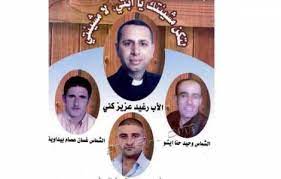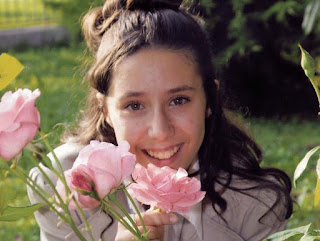An American priest we
have known for years, was pastor of a
church in the Umbrian town of Terni, Italy. The town suffered extensive damage from World
War II bombing, since it was a center of armament production. Through the
decades, much of the town has been restored. Yet one large church
stood alone in need of major renovation, the Church of the Immaculate
Conception. In 2017, Don Giovanni saw
potential in the church.
With the help of others,
Dom Giovanni felt this church would bear witness to women whose faithfulness was recorded in the Bible, the Torah, and the Quran. After all, the Church is
dedicated to the greatest of women. The women selected for the project are united in their faith in God, the Holy
One, revered and worshiped in the religions of Abraham.
The purpose
of the project is to ignite discussion about what these women of faith reveal
regarding the “genius of women.” This phrase comes from St. John Paul II’s 1997
book, The
Genius of Women. What role does God desire that women exercise to
bring about the kingdom here on earth? For far too long the true gift of women
to the life of faith and the life of the Church has been underemphasized.
Attention is needed to bring into full consciousness the feminine “genius of
women”, WOMEN of FAITH.
Sarah
Eve Hagar
The
women selected are Eve, Hagar, Sarah, Ruth, and Naomi; the woman in the Song of
Songs; the Samaritan woman; Mary, the mother of Jesus; friends Martha and Mary;
women disciples at the Last Supper; and of course Mary Magdalene. It was
decided to portray these women in the
ancient medium of fresco, which is found in so many old churches in Italy.
Interestingly
enough, the fresco
artist chosen to portray Women of Faith is from the USA,
Mark Balma, of Minneapolis,
Minnesota. He is considered the finest fresco artist in
the world today as well as a portraiture artist.
This artist is known for
his deep spirituality, a devotion to prayer, a passion for his work, and the strength and energy to stand for hours at a time on scaffolding high above
open space.
The preliminary
sketches of the 10 panels were complete, and sacks of plaster awaited the start of the project when the coronavirus
pandemic swept the world in fear. Mark, who has dual US and Italian
citizenship, found it now impossible to get his art to Terni. So how could Mark
create frescoes in Minneapolis
for walls almost 5,000 miles away? By using an ancient Greek technique.
The Greeks
didn't want to send skilled artisans far from Athens as travel in ancient times could be long and risky. So they learned to paint frescoes using lime-based paint on muslin
sail-cloth which could be rolled up and delivered to a distant site.
Mark learned
this technique, when studying in Florence
under the fresco artist Pietro Annigoni. A friend
offered Mark the use of an undeveloped atrium in a new building, the MoZaic Building in Minneapolis, to work on the art pieces.
When a panel is complete, it will be
removed from its frame and rolled for transport. Panels will be shipped to Terni when the pandemic
loosens its grip on the world. Immaculate Conception Church will remain a place
of worship as it awaits its adornments of faith.
Don Giovanni says of the
project: “Art and beauty are two forms of communication that humans have always
used. I believe these new frescoes have a unique potential to bring a message
of love, peace, joy, and fullness to this and future generations. They will
give beauty and a sense of completion that this building has never seen and new
life to a church . . . in desperate need of repair and love.
In the time of
confusion in which we live, when old values seemed to have disappeared, we find
ourselves in need of knowing more fully God’s will for our lives. We propose
this study of biblical women as an attempt to reveal further the will of God.”
In this place of meditation, visitors will find solace and direction as they
reflect on the women who nurtured the churches of antiquity.”
Photo-
Dave Hrbacek- "The Catholic Spirit"- Minneapolis
The frescoes are more
than exquisite art. They are visible prayers that will reach from a church once
destroyed by bombs into a world pleading for peace. The women’s stories
expressed in Scripture and tradition offer hope and direction for living in the
21st century. Each panel contains a message for God’s people today. In
meditating on each biblical story, seekers may gain a deeper understanding of
the will of God.
The project
invites people of various faiths to visit Immaculate Conception Church in
person, virtually, or through printed material, to worship and discover their
shared faith in the God of all. The faith that joins these women of Abrahamic
faiths is more powerful and uniting than the differences of culture they
experience. Don Giovanni expresses that hope: “Our prayer is that the images of
Sarah and Hagar with Abraham will allow us to believe that an interreligious
dialogue is possible between Hebrews, Christians, and Muslims.


























